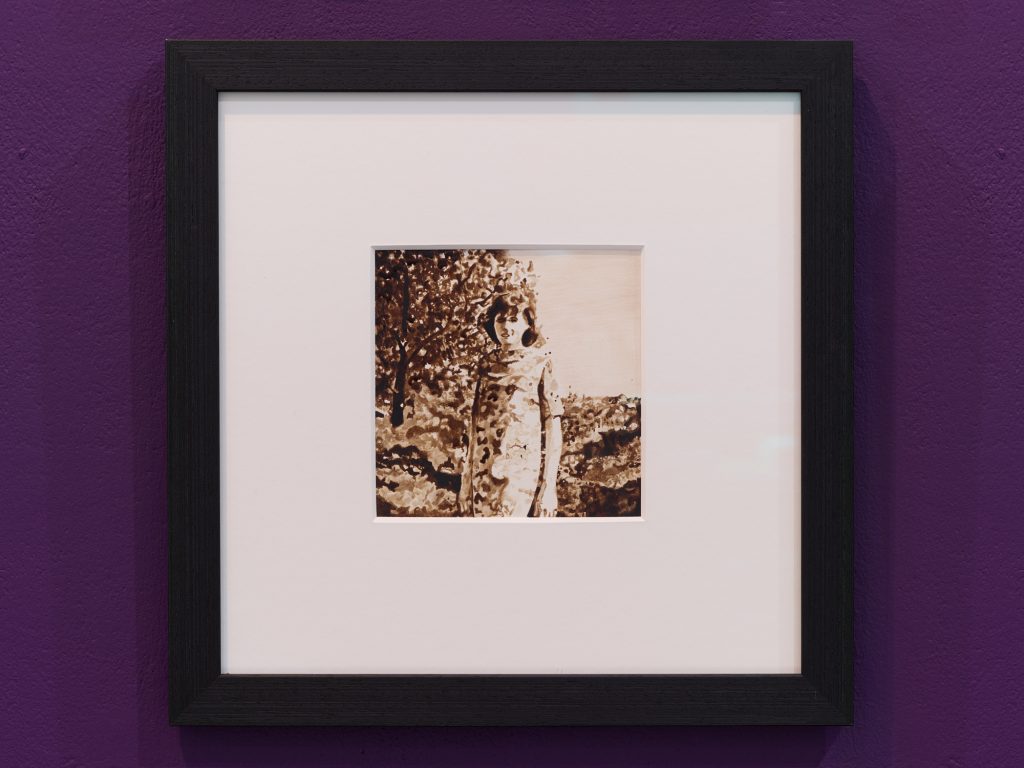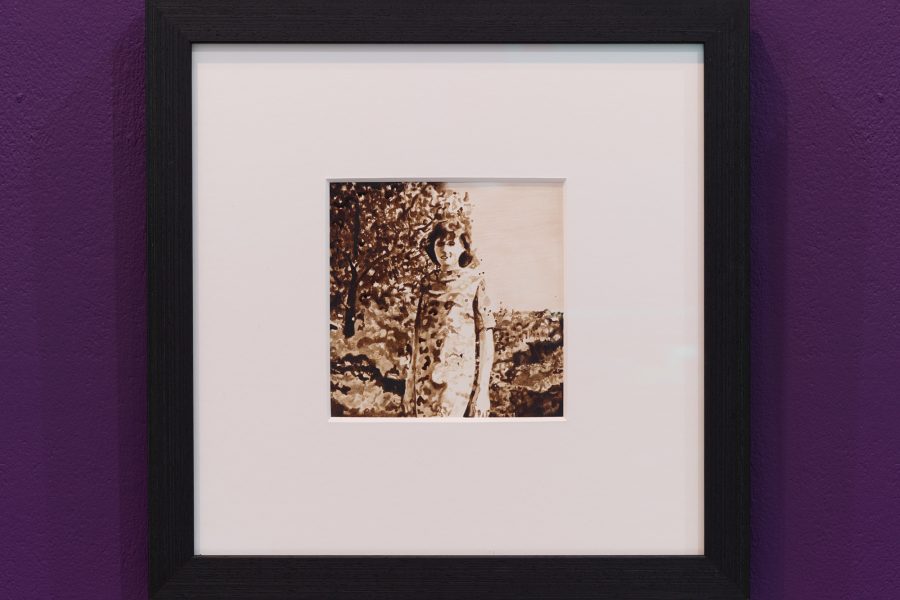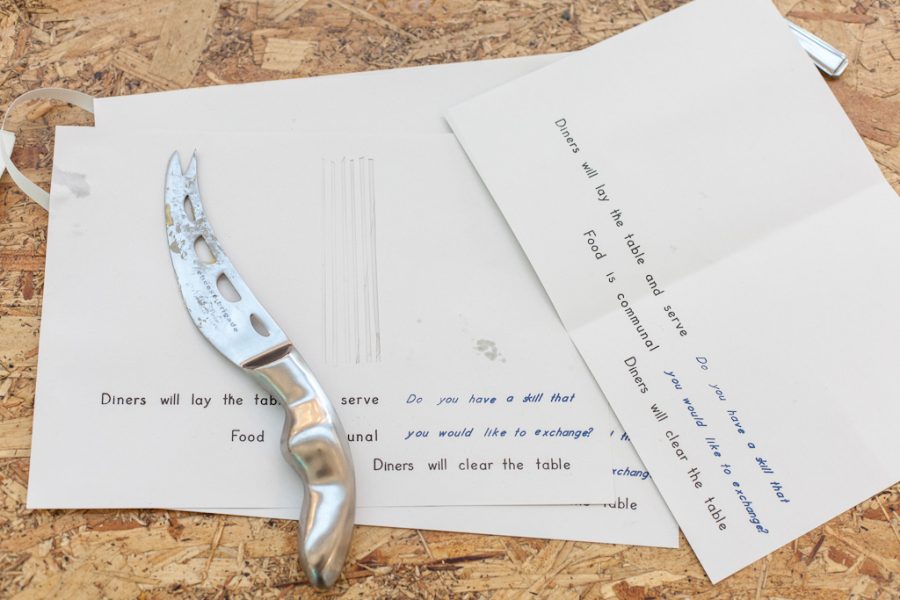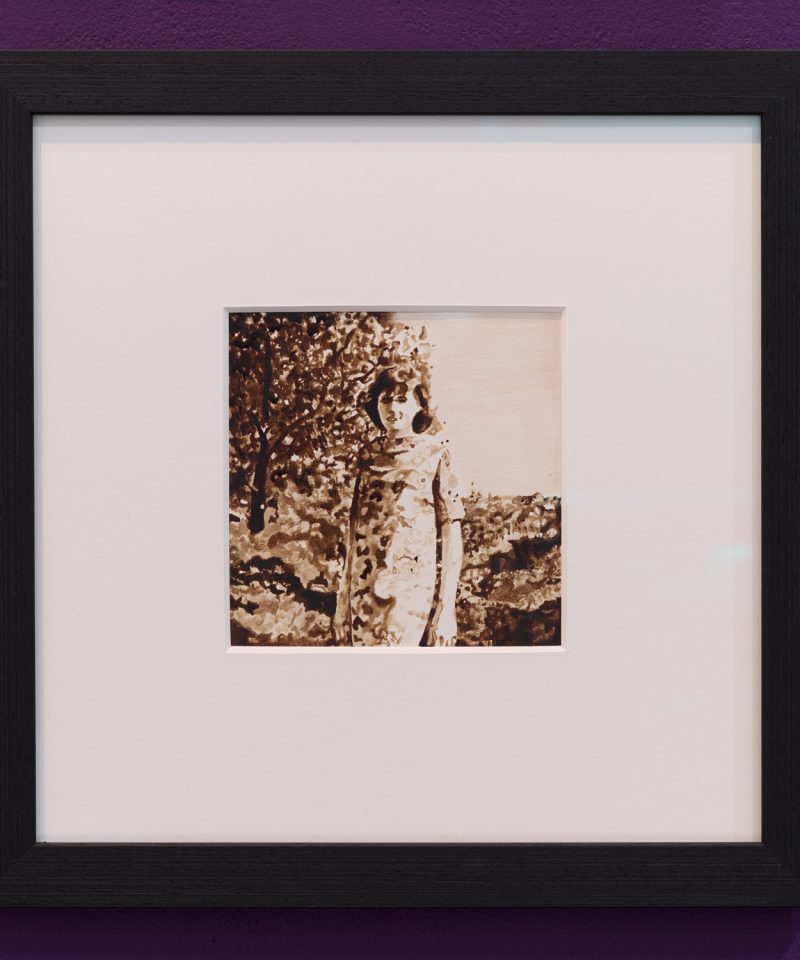In the not very distant past – you could call it the ‘long noughties’ – it appeared that the more painting struggled to come to terms with historical trauma, photography, and the historical trauma of photography, the more bankable it was. It was a swell that has subsided somewhat in the last half decade, but for a time it seemed every painter was in search of their very own uncle Rudi – Gerhard Richter’s beaming Nazi boy. This guilt and grayscale moment arguably encompassed market prizefighters like Luc Tuymans and Marlene Dumas – not photorealists in the vein of Richter but painters reckoning with the (capital H) Historicity of photography one way or another. In their wake, a few years younger, followed a multitude of mostly central European males on a similar fraught but lucrative trajectory – Wilhelm Sasnal, Michael Borremans, Eberhard Havekost, Johannes Kahrs…
In the very strictest sense Soheila Sokhanvari’s Paradise Lost is a series of drawings rather than paintings. I’m reluctant to set much stock by medium specificity but in terms of tonal range, the light comes from the ground i.e. the whiteness of the paper. Inasmuch as the distinction matters, then, I’m satisfied to say they are not paintings. However, a cursory glance might easily misregister them on the same spectrum as Richter’s progeny of painters above. The main divergence from that mode, aside from its Eurocentricity, hides in plain sight.
The twenty drawings in sequence, discrete in scale, tidy in arrangement, are based overwhelmingly, though not exclusively, on the artist’s old family photographs, frequently featuring her as a young child growing up in Iran shortly before the Islamic revolution of 1979. They are also rendered largely in crude oil and occasionally gold on what looks like unprimed paper – presumably having a significant impact on the future deterioration of the material if so. That’s one of the fundamental and dramatic ways in which it departs from the painting photos paradigm; it’s embodied petropolitics. There’s an intense symbolic charge to the material used, oil and gold being the historical fetish substances of empire. This material activation opens a potential wealth of oily metaphors concerning the archiving, reproduction – artisanal and mechanical – and circulation of images. It also points to the finite lifespan of notionally archival works deteriorating under the conditions of their own production: I’m reminded of Gericault’s Raft of the Medusa slowly turning black as the bitumen mixed liberally throughout the paint oxidizes.
As for the images themselves they are, from the outset, already in some degree of disintegration anyway, being drawn in such a way as to emphasize the overexposure and fading in the photographic prints. The most arresting drawings, however, possibly due to their incongruity in context more than their own discrete qualities, are those that depart from the family photos. A few seem to be drawn from press photography, including one documenting the 1967 death of Benno Ohnesorg, a German student shot dead by a police officer (later revealed to be a Stasi agent) while protesting the state visit of the Shah of Iran to West Berlin. Others still are ostensibly abstract. One of these looks like what could be a digitally rendered scan of an indistinct object made up of flat tone between triangulated points. Details like these jolt the viewer out of a sepia torpor of nostalgia.
A similar dynamic underscores Miranda Pennell’s film The Host which was screened as an accompaniment to Paradise Lost. It likewise foregrounds the interconnectedness of the personal and (petro)political. Pennell’s impressionistic documentary-of-sorts mines her early years as the child of a BP employee working in Iran. In the process she uncovers a new vein of research into the work of a young petroleum geologist whose fantastical theories on the extraterrestrial origins of civilization reveal the gross paternalism of the colonial imaginary – a paternalism that registers to contemporary sensibilities as flagrantly racist and apologist of grossly exploitative trade relations.
It’s clear why Pennell and Sokhanvari might arrive at some affinity, despite being from opposing sides of the colonial cultural divide as it were. In their work the image, the archive, empire, sovereignty, trade and political upheaval are inseparable not only from one another but from the lives and abiding memories of those in the affected region – each literally seeps into the fabric of the other.



